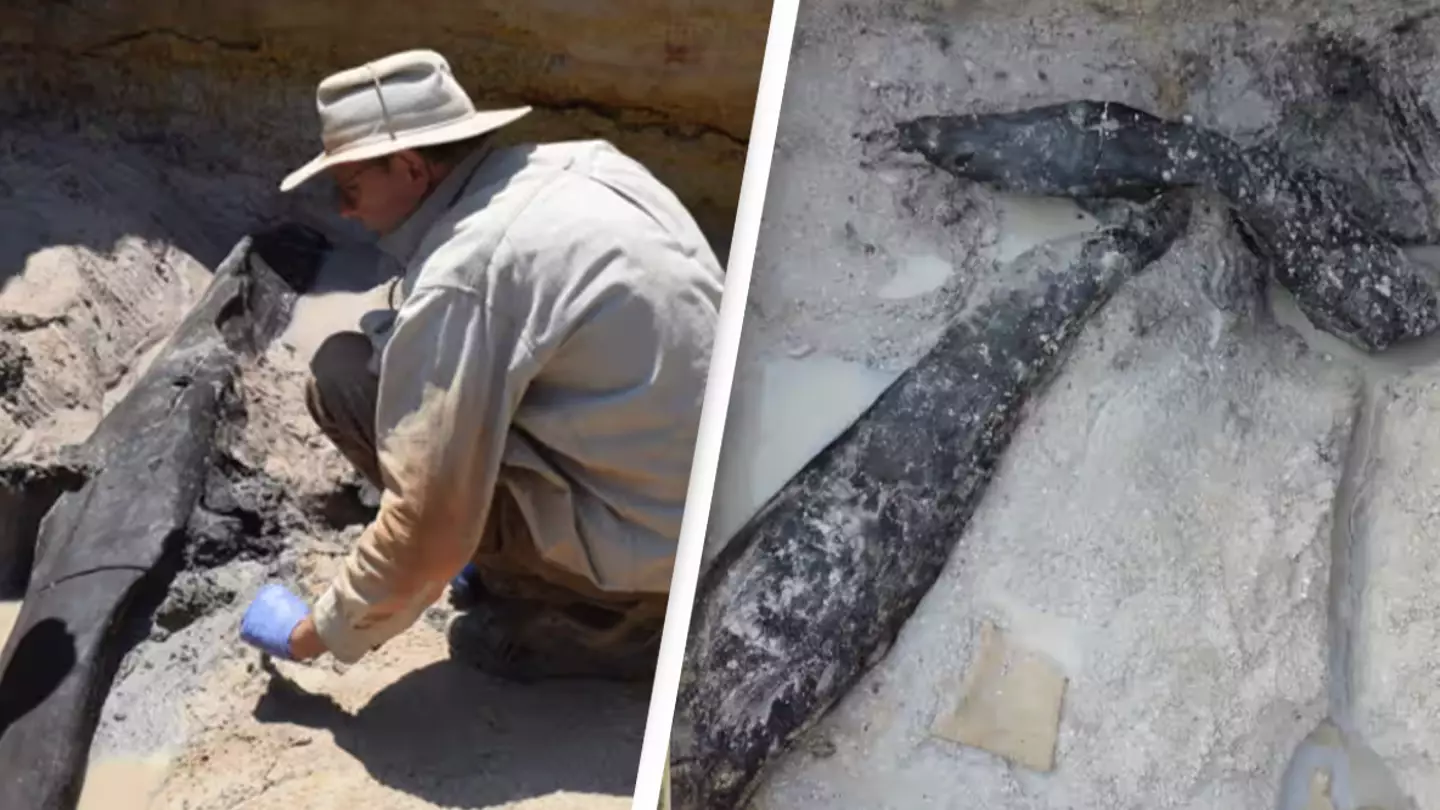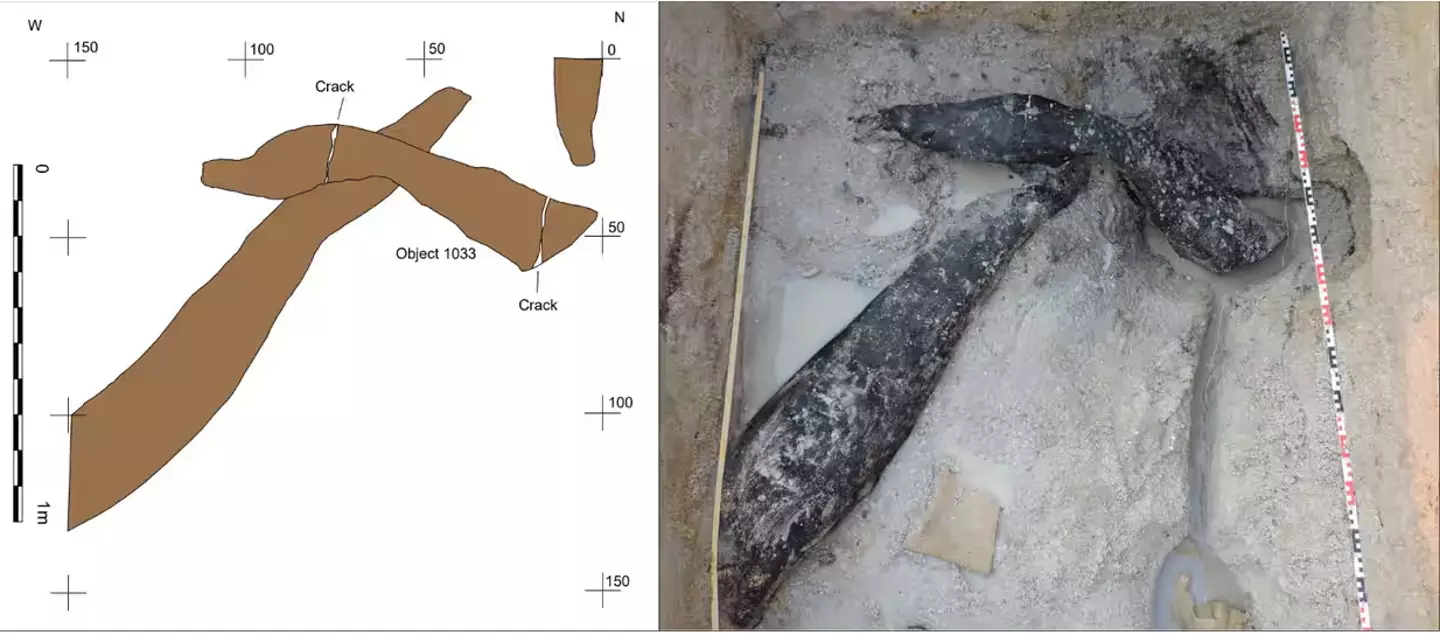
The ‘oldest wooden structure’ in the world may just have been discovered in Africa, according to scientists.
The wooden logs, which are believed to have been shaped with tools, could have been part of a walkway or platform, and were found on the border between Zambia and Tanzania.
The researchers aren’t exactly sure what they’ve found, but they are aware that it could change our understanding of the ancestors of modern humans.
Advert
The structure, which seems to have been made using two tooled logs, could have been used by pre-Homo Sapiens ancestors who lived alongside the Kalambo River almost 500,000 years ago.
Distinctive markings on the wood show that the logs were cut up and scraped away with tools, which have also been discovered nearby.

In one log, a U-shaped cut has been made so that the other log could be held in place. Obviously, this is massively exciting for the archaeologists who made the discovery.
Advert
The leader of the work, Larry Barham, from the University of Liverpool, said: “When I first saw it, I thought this can’t be real. The wood and the stone suggest a high level of ingenuity, technological skill and planning.”
“It could be part of a walkway or part of a foundation for a platform,” he explained further.
“A platform could be used as a place to store things, to keep firewood or food dry, or it might have been a place to sit and make things. You could put a little shelter on top and sleep there.”
Scientists at the University of Aberystwyth have now dated the structure as being at least 476,000 years old, which predates the emergence of Homo Sapiens some 300,000 years ago.
Advert
This means that the structure may have been made by Homo Heidelbergensis, one of Homo Sapiens' ancestors that lived in that area at the time.
The work at the river started back in 2019, and – although they were forced to shift exploration area due to the movement of the river – they found a digging stick dating from around 390,000 years ago.
Of the findings, Barham speculated: “It might be a work surface, like a Black and Decker workbench.”

Wood doesn’t often survive for this long, making this find even more extraordinary.
Advert
On this occasion, the preservation was a result of sediment that became waterlogged and starved of oxygen.
“It may not be the beginning of the built environment, but it is the earliest time we have of people taking trees, taking charge of this material, and shaping something that has no precedent, that has no natural form to emulate,” Barham continued.
“It’s a real cultural imposition on the landscape.”
Now, the scientists are hoping to find more things as their work continues.
Advert
Dr Annemieke Mills, a palaeolithic archaeologist at the University of Reading, said that the discovery shows evidence of a ‘behavioural threshold’ and is proof that – even 476,000 years ago – humans were shaping materials to change their environment.

She said: “Although quite simple in nature, the shaped and interlocking logs indicate that these humans structured their environment,
“While many other animals engage in such behaviours, the Kalambo Falls humans made use of multiple materials – at the very least stone and wood, and possibly fire – to do so.
“The rarity of wood preservation implies that such behaviours were more widespread than what we witness in the archaeological record,
“Although the use of wood for tools and structures remains commonplace today, their findings provide a rare glimpse into the role that this simple material played in human evolution.”
Topics: World News, Science
